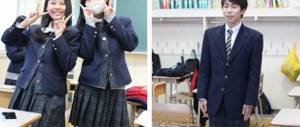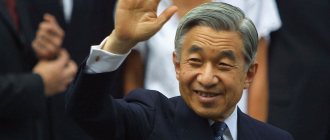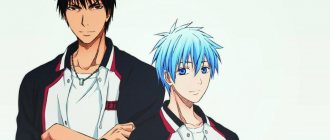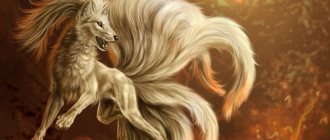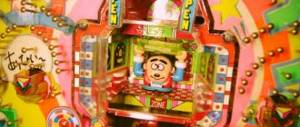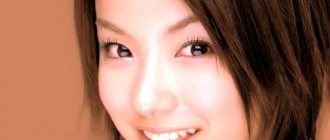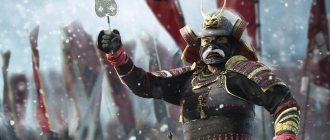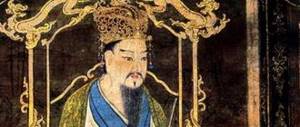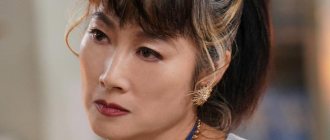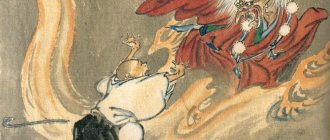Clan (gens) Minamoto (源氏)
Minamoto Clan (源氏)
Japanese commoners did not have official surnames until the Meiji Restoration (1868) , meaning that in ancient Japan, receiving a surname was a sign of high status.
The surname Minamoto was bestowed upon degraded members of the imperial family, beginning with Emperor Saga, the 52nd Emperor of Japan. He lived from 786 to 842 and is rumored to have had about 49 children , who were denied the status of princes, leading to a decline in the position of some of his descendants, which eased the financial burden of the imperial court.
This practice of the imperial government led to the emergence of 21 Minamoto clans. The surname Minamoto, using the kanji 源, or "ancestry", indicated their preferred status and proximity to the imperial line.
Famous members of the Minamoto clan, or Minamoto-Shi (源氏), include the famous samurai Minamoto no Yoshitsune and his older half-brother Minamoto no Yoritomo, who founded the Kamakura shogunate in 1185. Minamoto no Toru , (源融; 822 - September 21, 895) - Japanese poet and statesman from the Sana Genji clan; grandson of Emperor Saga. Toru is considered the model for Hikaru Genji, the depraved protagonist of the 11th century work The Tale of Genji or Genji Monogatari (源氏物語).
Myths about samurai swords. Part 3
Clan (clan) Taira (平氏)
Taira (Japanese 平, also known as Heishi, 平氏, Taira or Heike clan, 平家, Taira family)
Taira is another hereditary surname granted to the demoted children of Heian period emperors. Emperor Kanmu, the father of Emperor Saga, is believed to have named some of his grandsons around 825.平氏 can be read as Taira-uji or Hei-shi, while the clan is also referred to as 平家, or Heike, which literally means Taira House.
Most of the clan's families were descended from Prince Katsurawara, son of Emperor Kammu. Taira's strong rival was the Minamoto clan, with whom Taira had to wage a stubborn struggle due to influence on state affairs. War broke out between them from 1180 to 1185. The Genpei War (源平合戦 Genpei Gassen) ultimately led to the defeat of the Taira clan and the establishment of the Kamakura shogunate, under which the emperor became a figurehead. In 1192, Minamoto no Yoritomo received the title of shogun and created the first bakufu in Kamakura (Kanagawa Prefecture ).
The clan struggles are recounted in the epic poem The Tale of Genji (平家物語・Genji Monogatari), which is believed to have been composed sometime before 1309.
Clan (family) Fujiwara (藤原氏)
The Fujiwara clan actually preceded both the Minamoto and Taira, going all the way back to the Asuka period (592-710).
To counter the growing influence of Buddhism in Japan, in 645 Nakatomi no Kamatari (614-669) initiated a coup d'état that led to the accession of Emperor Kotoko, who made Kamatari his minister of the interior, the second-in-command in the country. Kamatari immediately led the Taika Reforms (大化の改新, Taika no Kaishin), consolidating imperial power. He received the highest rank of Taishokan (大織冠) and a new name when Emperor Tenji ascended the throne, thus founding the Fujiwara clan (藤原氏・ Fujiwara-uji / Fujiwara-shi) as Fujiwara no Kamatari in 668. Fujiwara in Japanese means “Wisteria Field”.
Although the House of Fujiwara had no direct connection to the imperial line, it maintained its dominance by monopolizing key court positions and marrying off the clan's daughters to Japanese emperors, making them the de facto power brokers during the Heian period.
With the rise of the Kamakura shogunate, the family's power diminished, but it still remained influential centuries later, as many of the important figures behind the Tokugawa shogunate (1603-1868) were variously associated with the Fujiwara.
Oda Nobunaga, the first of the Three Great Unifiers of Japan, was a descendant of both Fujiwara and Tiara, while his successor, Toyotomi Hideyoshi, was related to Fujiwara by marriage, as was Tokugawa Ieyasu, the first Tokugawa shogun. Even the Date clan claims Fujiwara descent, including the powerful samurai Date Masamune, who fought alongside Ieyasu.
Fumimaro Konoe, Japan's prime minister on the eve of World War II, was also a Fujiwara descendant, and his grandson, Morihiro Hosokawa, was prime minister from 1993 to 1994.
Education and code of the samurai
When raising future samurai, they tried to instill in them indifference to death, physical pain and fear, a cult of respect for elders and loyalty to their master. The mentor and family primarily focused on developing the character of the young man who took this path, developing in him courage, endurance and patience. Character was developed by reading stories about the exploits of heroes who glorified themselves as samurai of the past, and by watching relevant theatrical productions.
Sometimes the father ordered the future warrior, in order to become bolder, to go alone to a cemetery or other “bad” place. It was common practice for teenagers to attend public executions, and they were also sent to examine the bodies and heads of dead criminals. Moreover, the young man, the future samurai, was obliged to leave a special sign that would prove that he was not shirking, but was actually here. Often, future samurai were forced to do hard work, spend sleepless nights, walk barefoot in winter, etc.
Training of the future samurai (still from the 2003 film “The Last Samurai”)
It is known for certain that samurai were not only fearless, but also very educated people. The Code of Bushido, which was already mentioned above, stated that a warrior must improve himself by any means. And therefore, the samurai did not shy away from poetry, painting and ikebana, they studied mathematics, calligraphy, and held tea ceremonies.
Zen Buddhism also had a huge influence on the samurai class. It came from China and spread throughout Japan at the end of the 12th century. Samurai found Zen Buddhism as a religious movement very attractive, as it contributed to the development of self-control, will and composure. In any situation, without unnecessary thoughts or doubts, the samurai had to go straight to the enemy, without looking back or to the side, in order to destroy him.
Many samurai actively used Buddhist meditation practices
Another interesting fact: according to Bushido, the samurai was obliged to carry out the orders of his master unquestioningly. And even if he ordered to commit suicide or go with a detachment of ten people against an army of a thousand, this had to be carried out. By the way, the feudal lords sometimes gave the order to the samurai to go to certain death, to battle with an enemy superior in numbers, just to get rid of him. But one should not think that samurai never passed from master to master. This often happened during skirmishes between small feudal lords.
The worst thing for a samurai was to lose honor and cover himself with shame in battle. They said about such people that they were not even worthy of death. Such a warrior wandered around the country and tried to earn money like an ordinary mercenary. Their services were used in Japan, but they were treated with disdain.
One of the most shocking things associated with samurai is the ritual of hara-kiri or seppuku. A samurai had to commit suicide if he was unable to follow Bushido or was captured by his enemies. And the ritual of seppuku was considered an honorable way to die. It is interesting that the components of this ritual were a ceremonial bath, a meal with the most favorite food, and the writing of the last poem - tank. And next to the samurai performing the ritual, there was always a faithful comrade, who at a certain moment had to cut off his head in order to stop the torment.
Clan (genus) Tachibana (橘氏)
Tachibana Clan (橘氏)
Tachibana Clan (橘氏・ Tachibana-shi), (橘氏, Tachibana-Uji, Tachibana-shi) The Tachibana Clan (kuge) is the smallest of the four powerful clans of the Heian period, although it is the second oldest after Fujiwara. It was founded by Agata Inukai no Michiyo (655?-733), a court lady who first married a minor imperial prince and then, after his death, Fujiwara no Fuhito, the second son of Fujiwara no Kamatari . Their daughter would eventually marry Emperor Shomu and become the Empress of Komyo.
Members of the Tachibana family often held high court positions in the Daijo-kan (Ministry of State), most often the Sadaijin (Minister of the Left). In 684, the Michiyo clan received the honorific name Tachibana from Empress Genmei, and Michiyo's children from his first marriage adopted the surname in 736, when they renounced membership in the imperial family. Even though there were many arranged marriages between Tachibana, Fujiwara and the imperial family, Tachibana and Fujiwara continued to fight for power, for dominance in court politics and thus essentially for control of the nation. One such conflict was the rebellion of Fujiwara no Sumitomo in 939–941. Although the Taira and Fujiwara rebellion were eventually crushed, the Tachibana family weakened, diminished during the wars, and lost much of their power.
Another branch of the family arose in Iyo Province, becoming known as the Iyo Tachibana family. Tachibana Toyasu, who executed Fujiwara no Sumitomo, was the progenitor of this branch; Kusunoki Masashige, the famous pro-imperial commander of the 14th century, claimed descent from Toyasu.
Views: 4,646
Share link:
- Tweet
- Share posts on Tumblr
- Telegram
- More
- by email
- Seal
Appearance, weapons and armor of the samurai
What medieval samurai looked like is reliably known from many sources. Over the course of many centuries, their appearance has remained almost unchanged. Most often, samurai wore wide trousers, reminiscent of a skirt in cut, with a bun of hair on their heads called motodori. For this hairstyle, the forehead was shaved bald, and the remaining hair was braided into a knot and secured on the top of the head.
This photo clearly shows the traditional samurai hairstyles
As for weapons, samurai have used different types throughout their long history. Initially, the main weapon was a thin short sword called a chokuto. Then the samurai switched to curved swords, which eventually transformed into the katanas known throughout the world today. In the Bushido code it was said that the soul of a samurai is contained in his katana. And it is not surprising that this sword was considered the most important attribute of a warrior. As a rule, katanas were used in conjunction with a daisho, a short copy of the main sword (daisho, by the way, only samurai had the right to wear - that is, it was an element of status).
In addition to swords, samurai also used bows, since with the development of warfare, personal courage and the ability to fight the enemy in close combat began to matter much less. And when gunpowder appeared in the 16th century, bows gave way to firearms and cannons. For example, flintlock guns called tanegashima were popular in the Edo era.
Samurai with a gun
On the battlefield, samurai wore special armor - armor. This armor was luxuriously decorated and looked somewhat ridiculous, but each part had its own specific function. The armor was both durable and flexible, allowing its owner to move freely on the battlefield. The armor was made of metal plates tied together with leather and silk laces. The arms were protected by rectangular shoulder shields and armored sleeves. Sometimes such a sleeve was not worn on the right hand to make fighting easier.
An integral element of the armor was Kabuto's helmet. Its cup-shaped part was made of metal plates connected with rivets. An interesting feature of this helmet is the presence of a balaclava (exactly like Darth Vader from Star Wars). It protected the owner's neck from possible blows from swords and arrows. Along with helmets, samurai sometimes wore gloomy Mengu masks to intimidate the enemy.
Samurai in armor
In general, this combat clothing was very effective, and the United States Army, as experts say, created the first body armor based on medieval Japanese armor.
